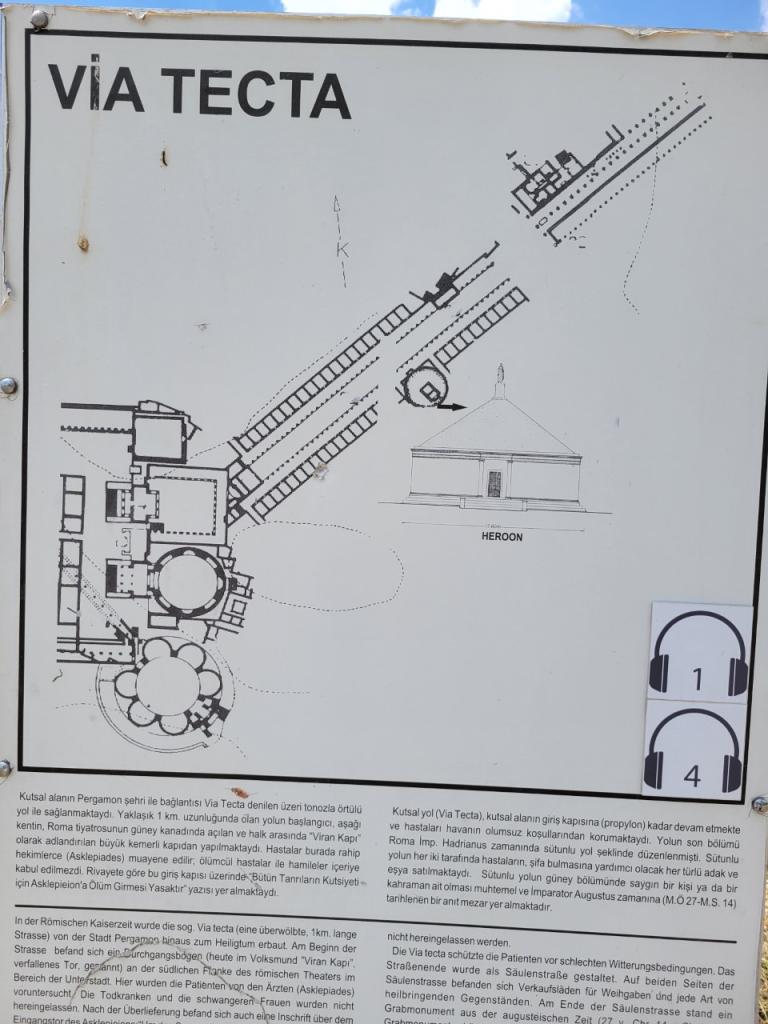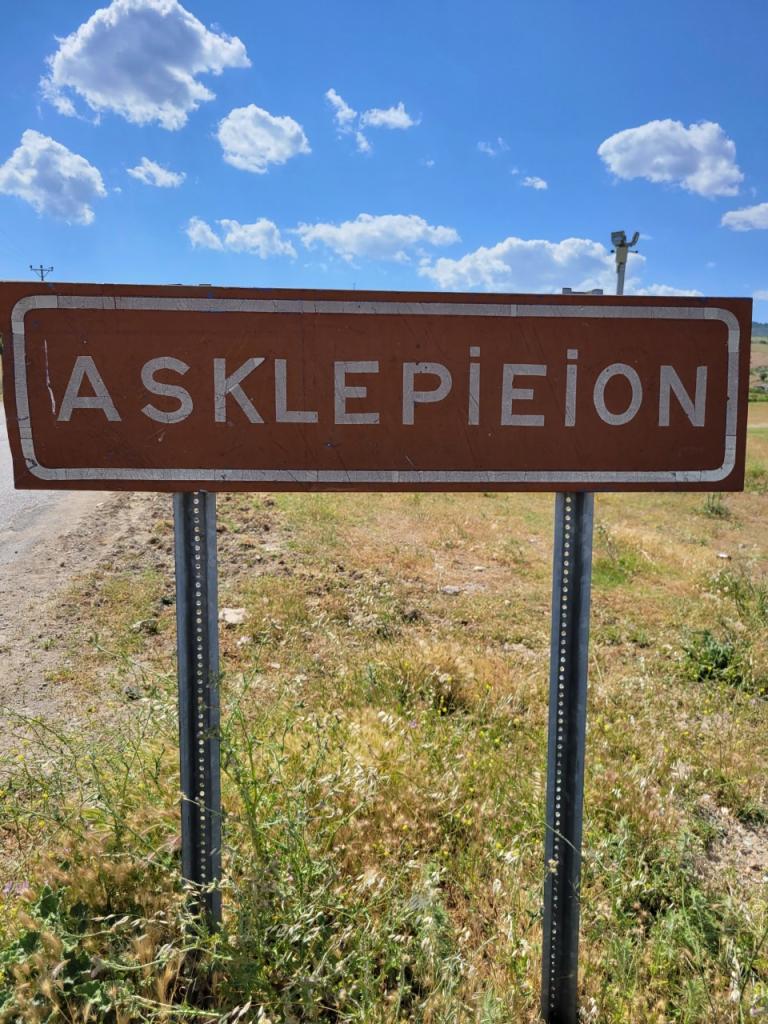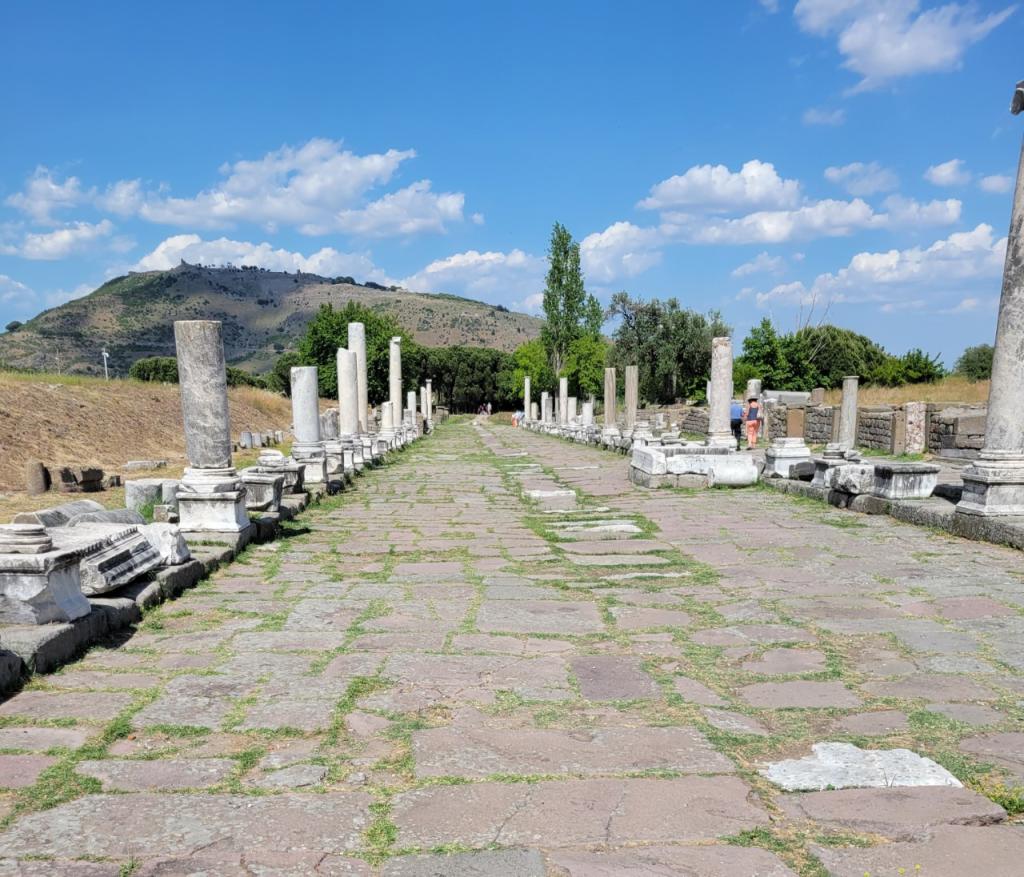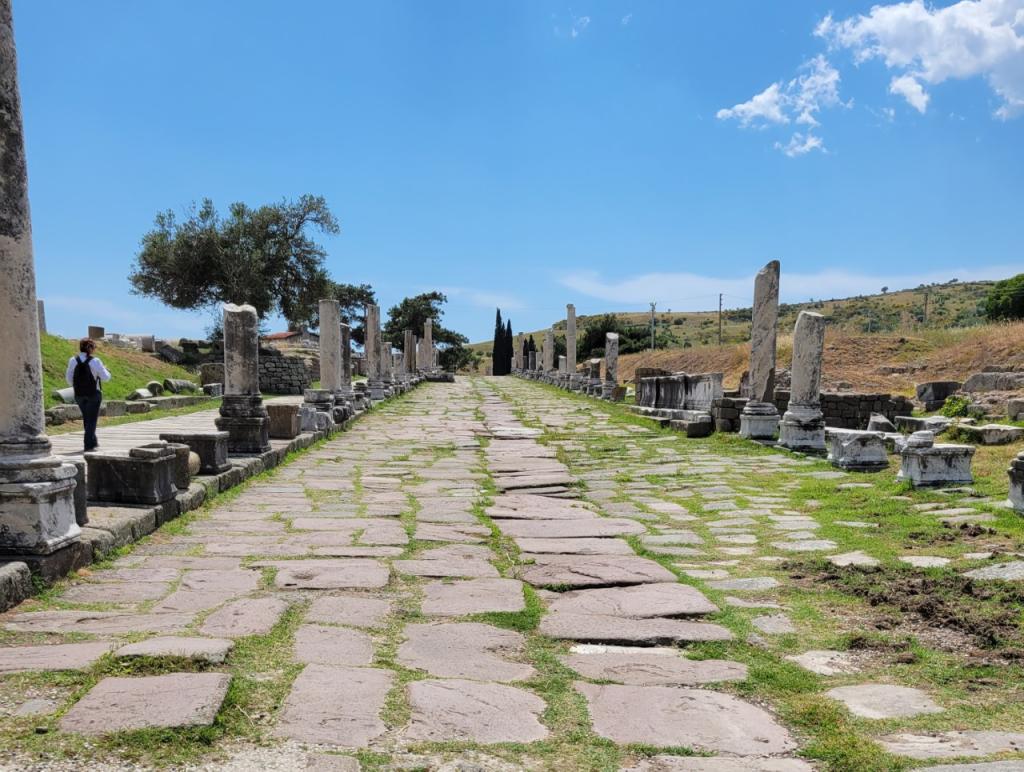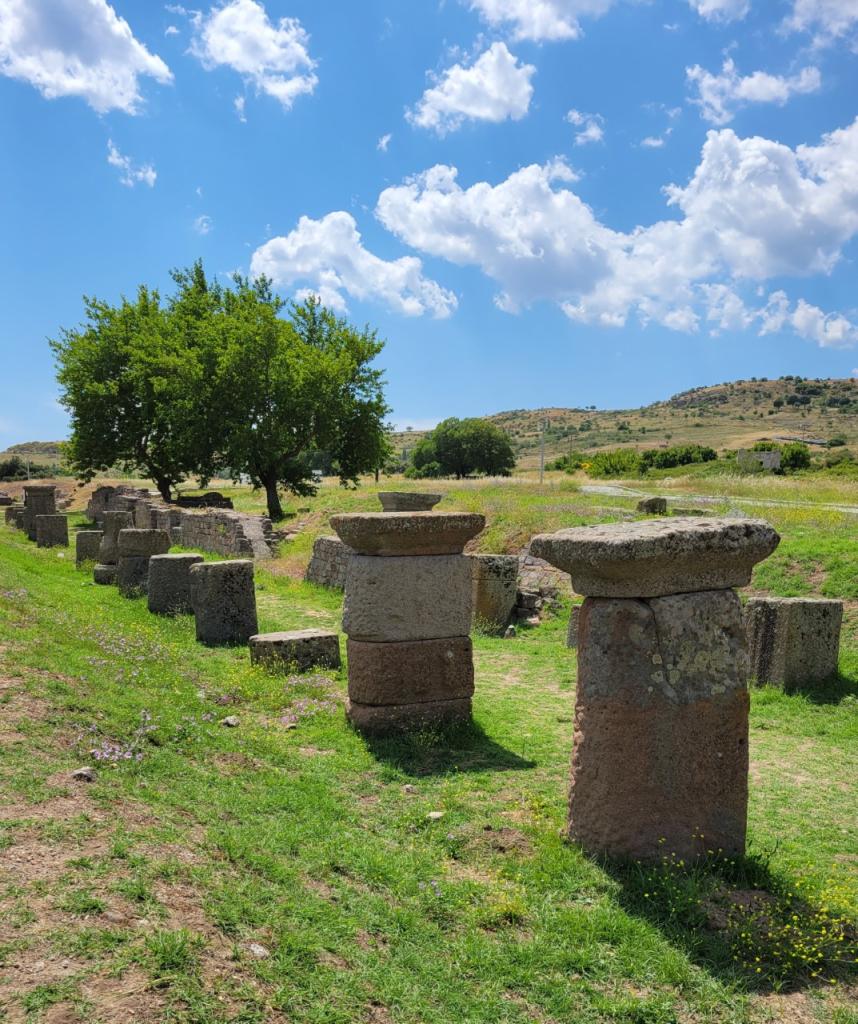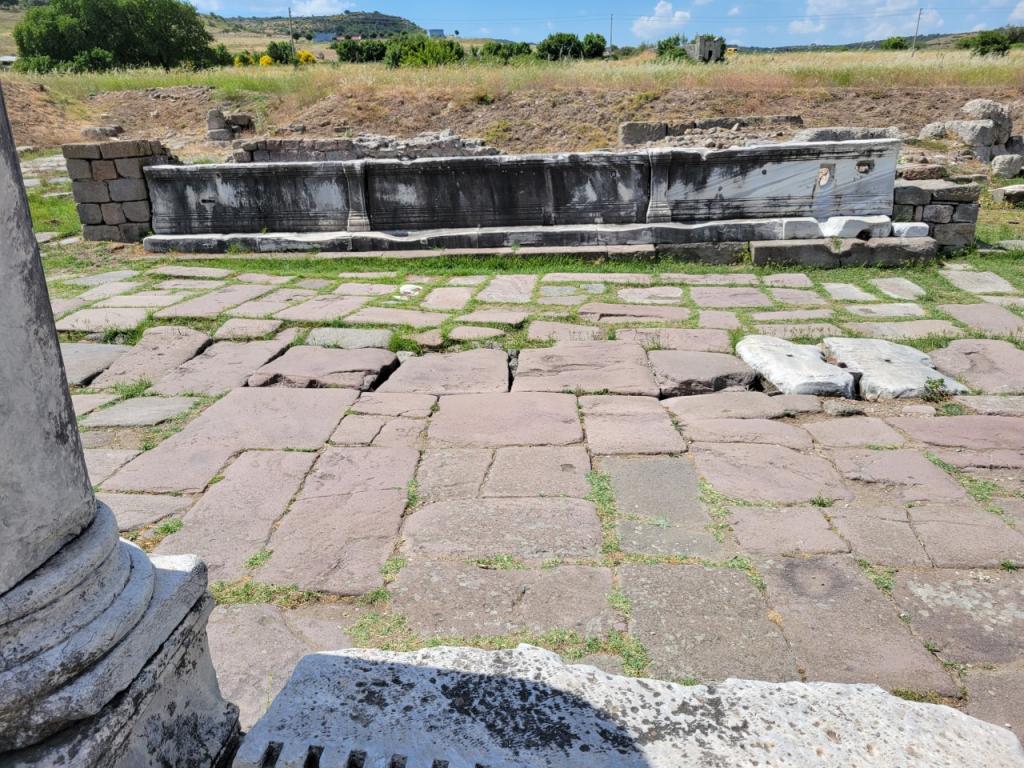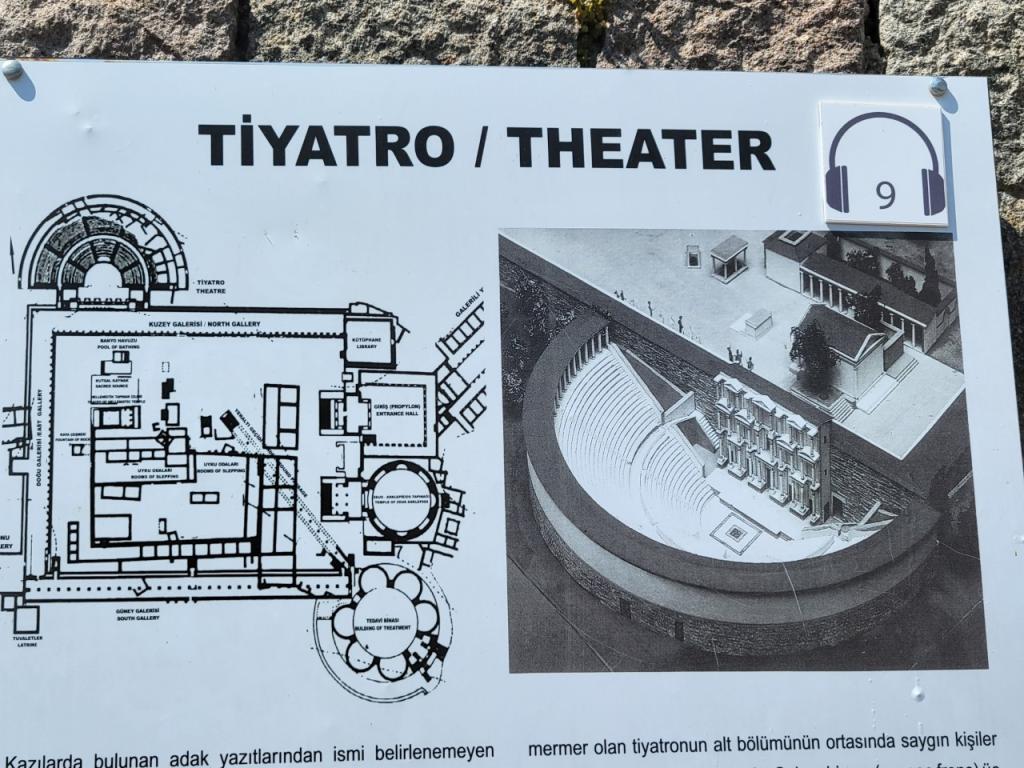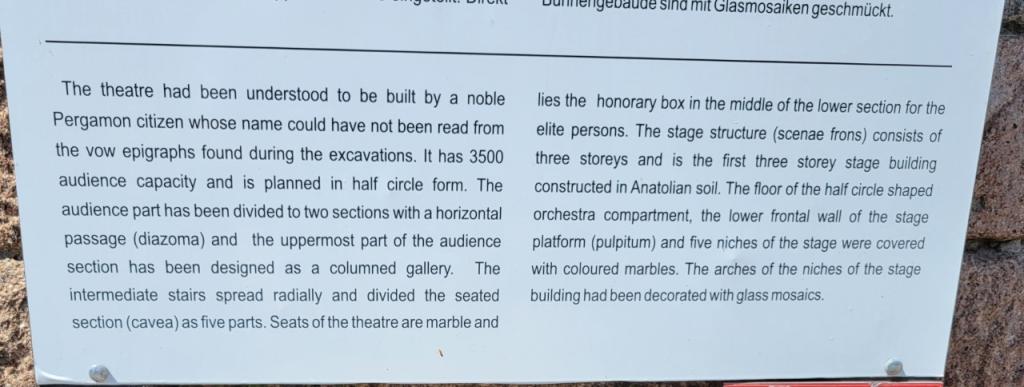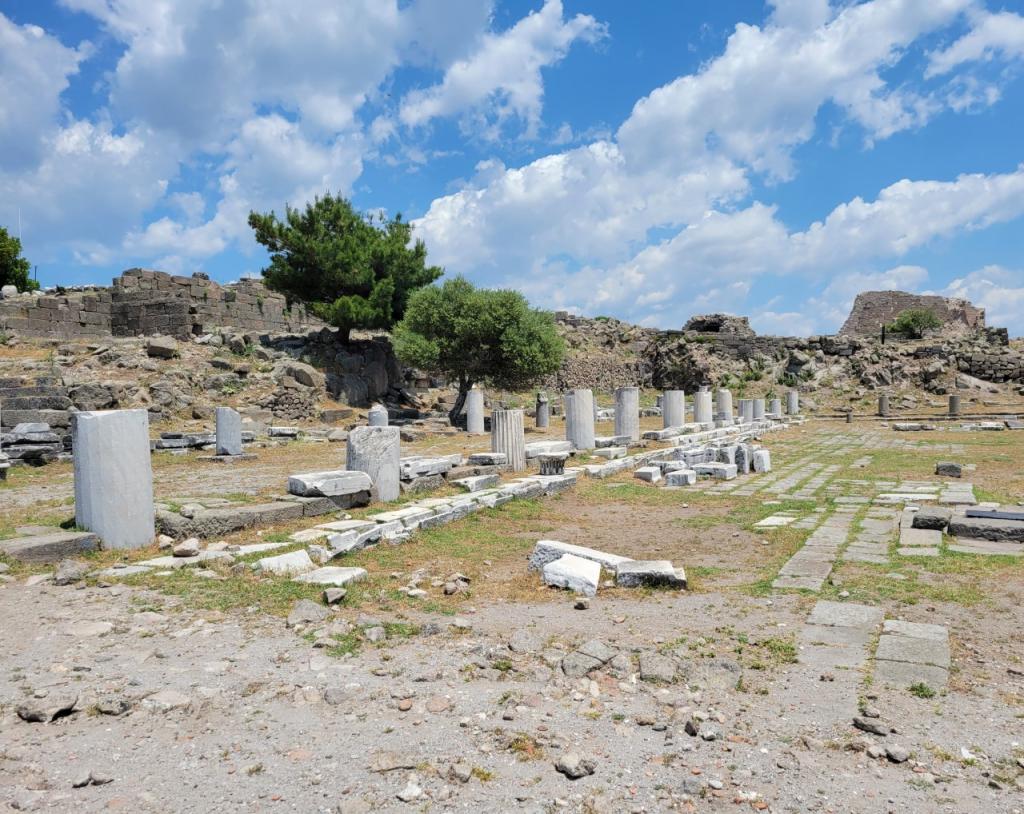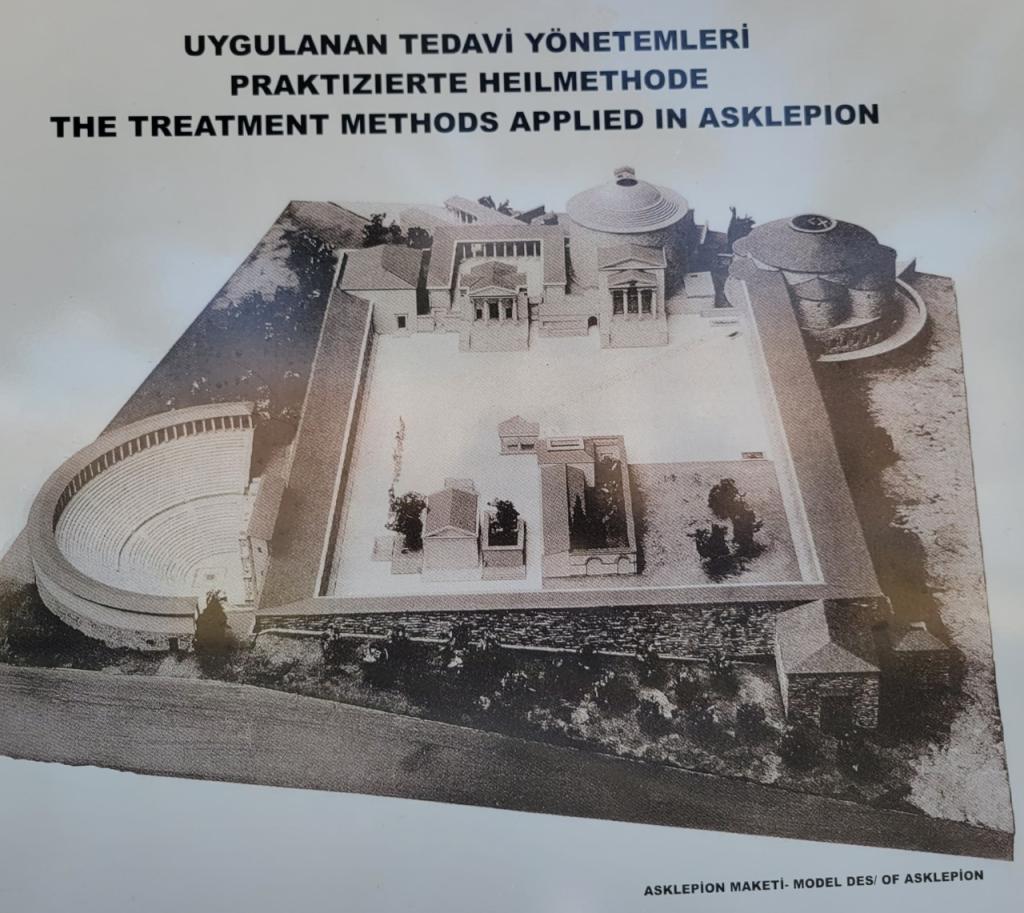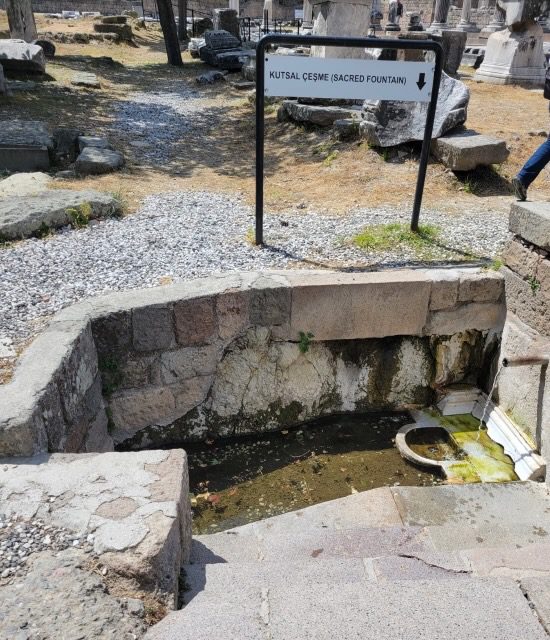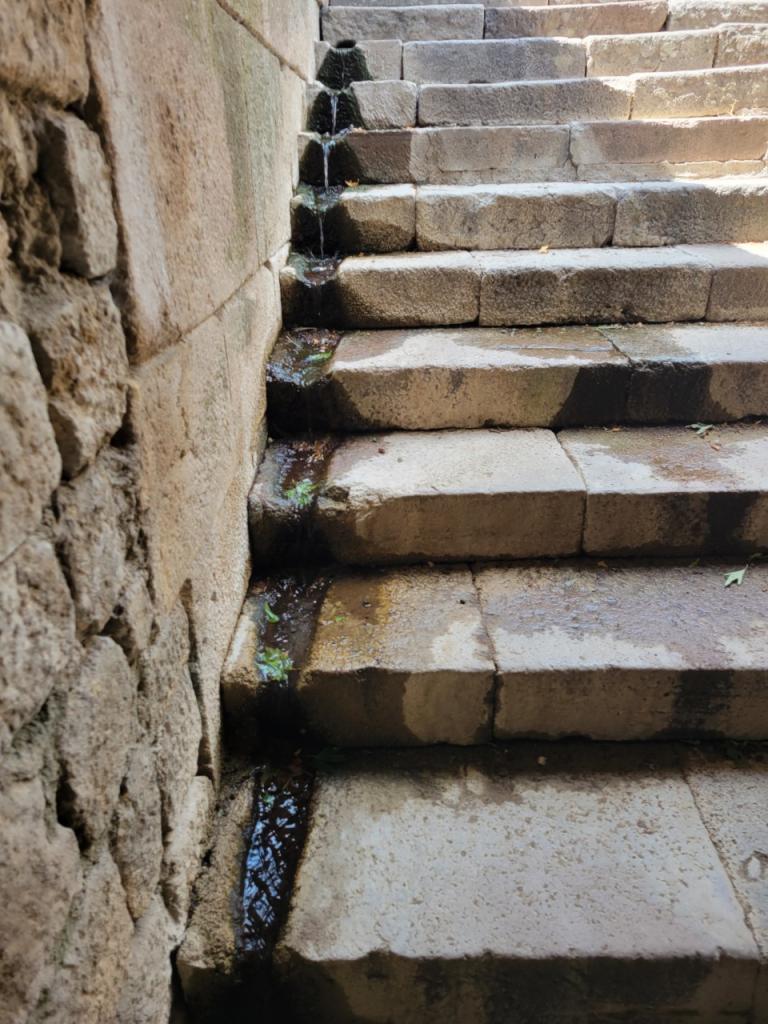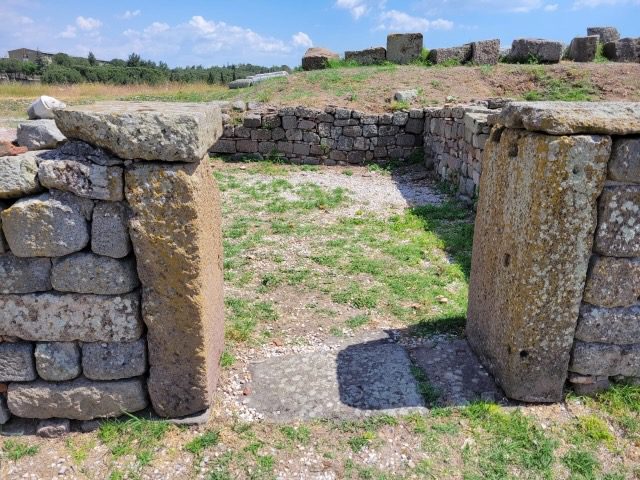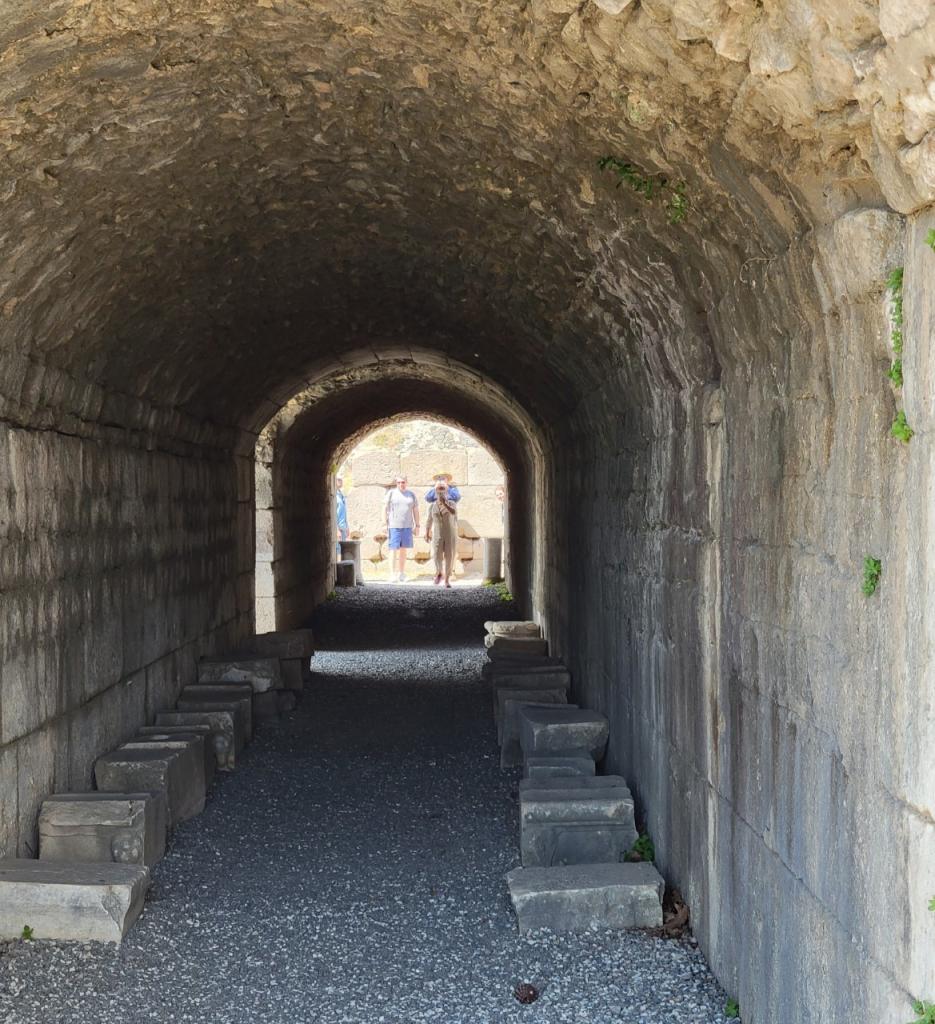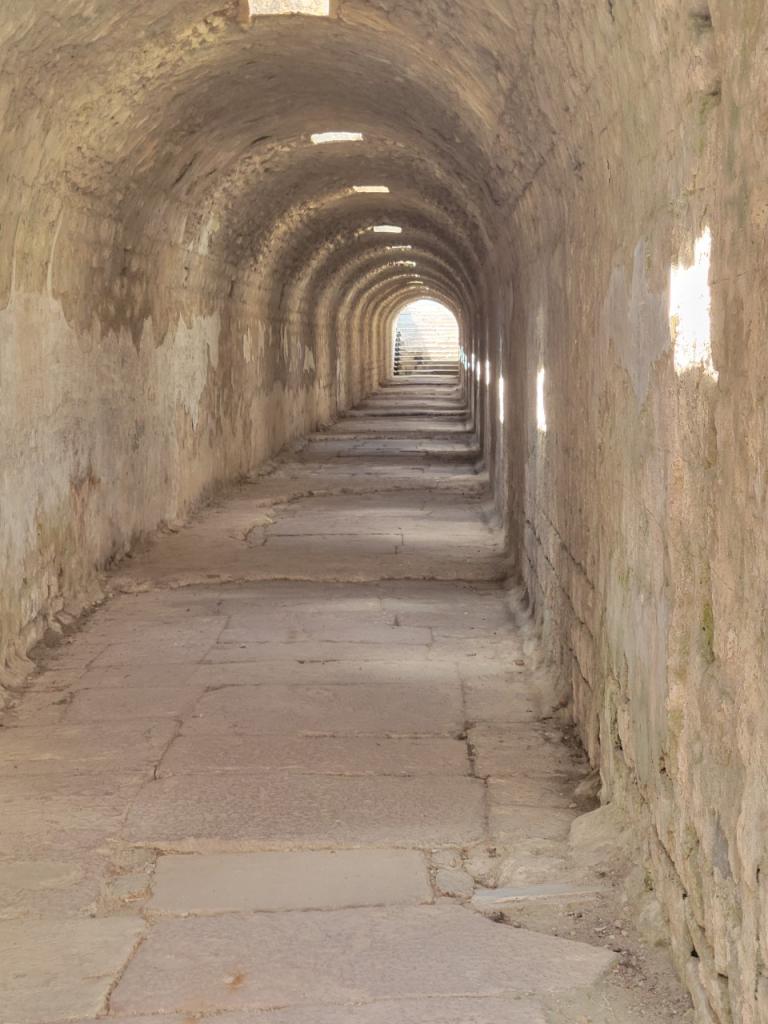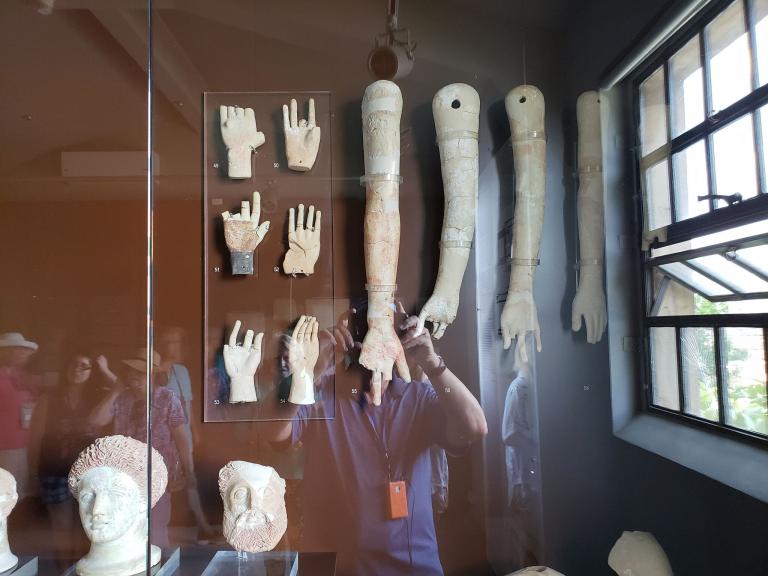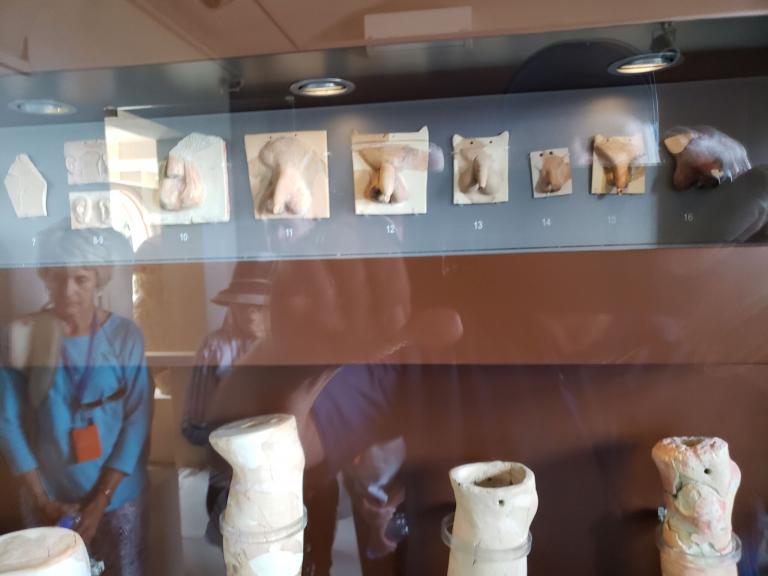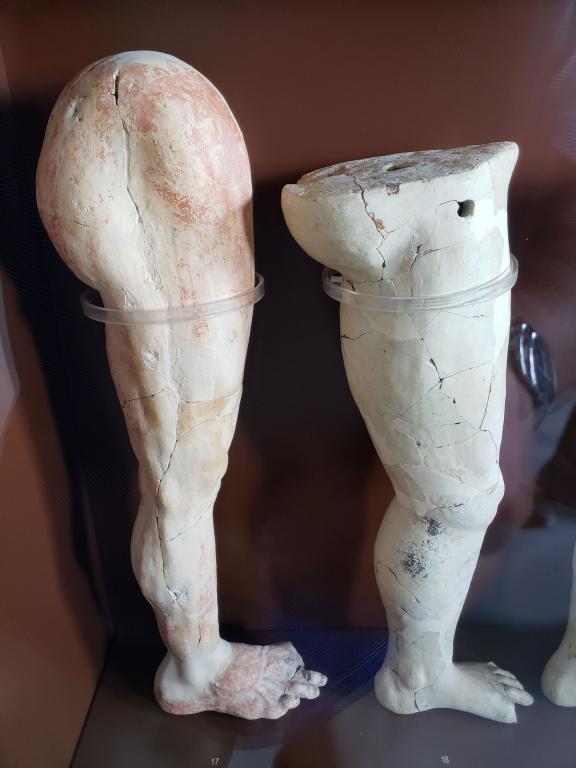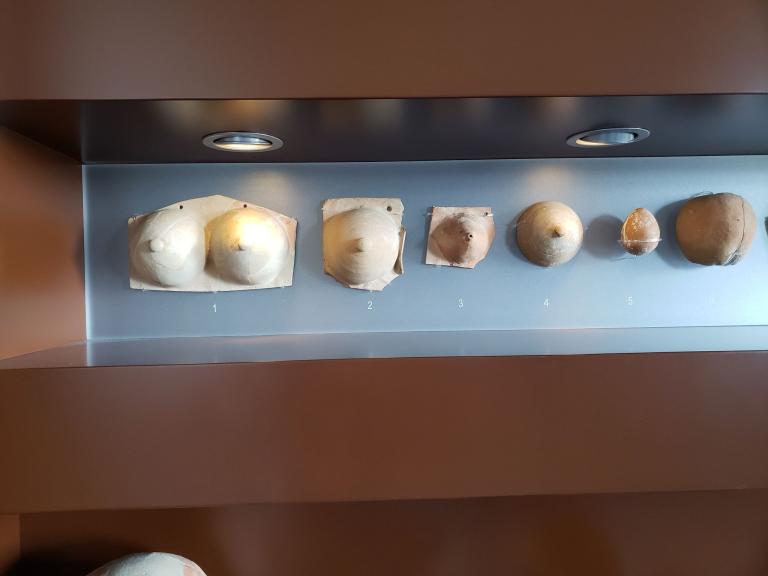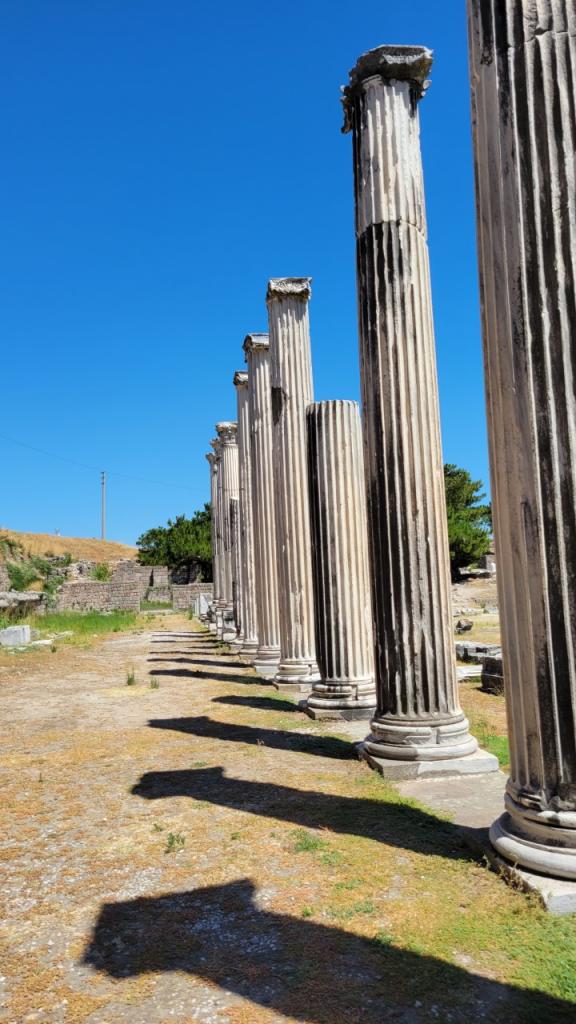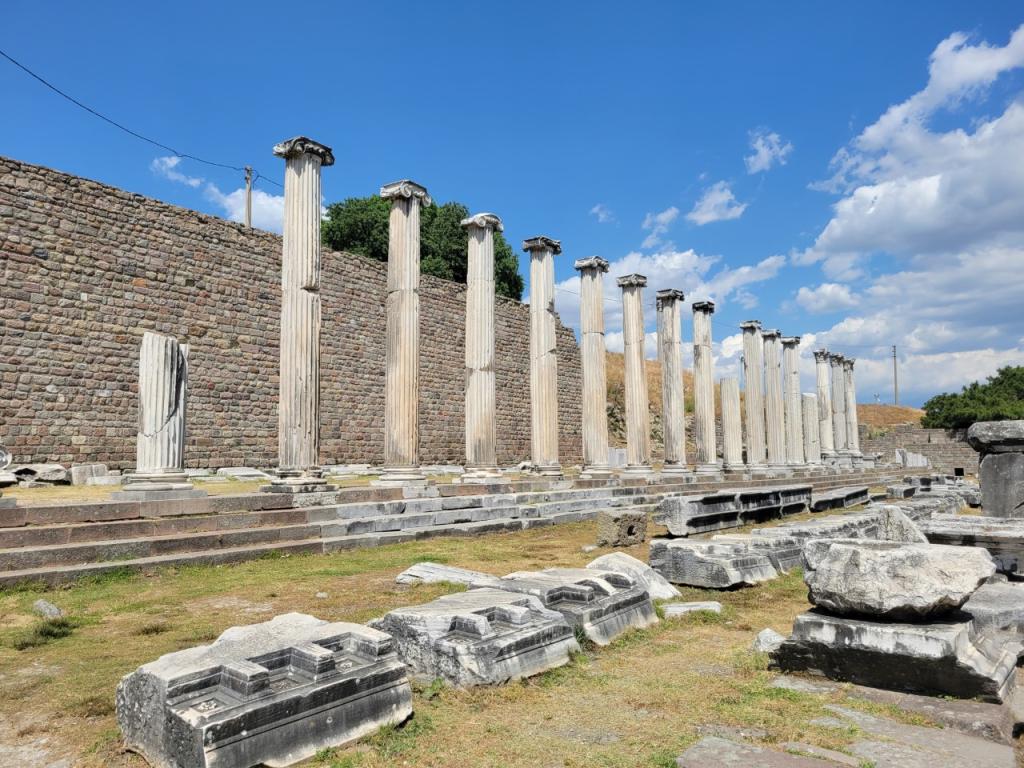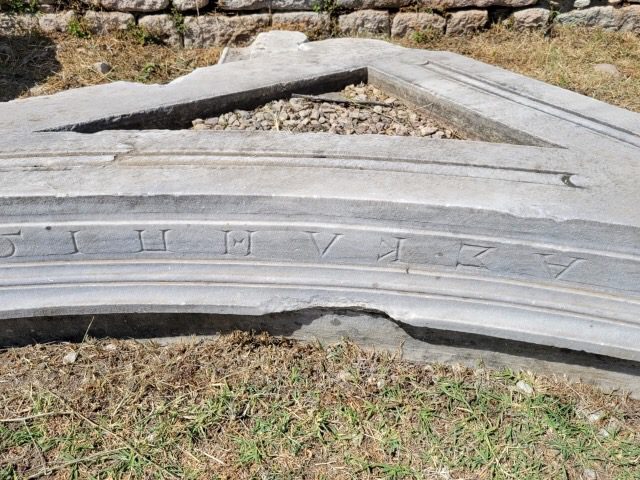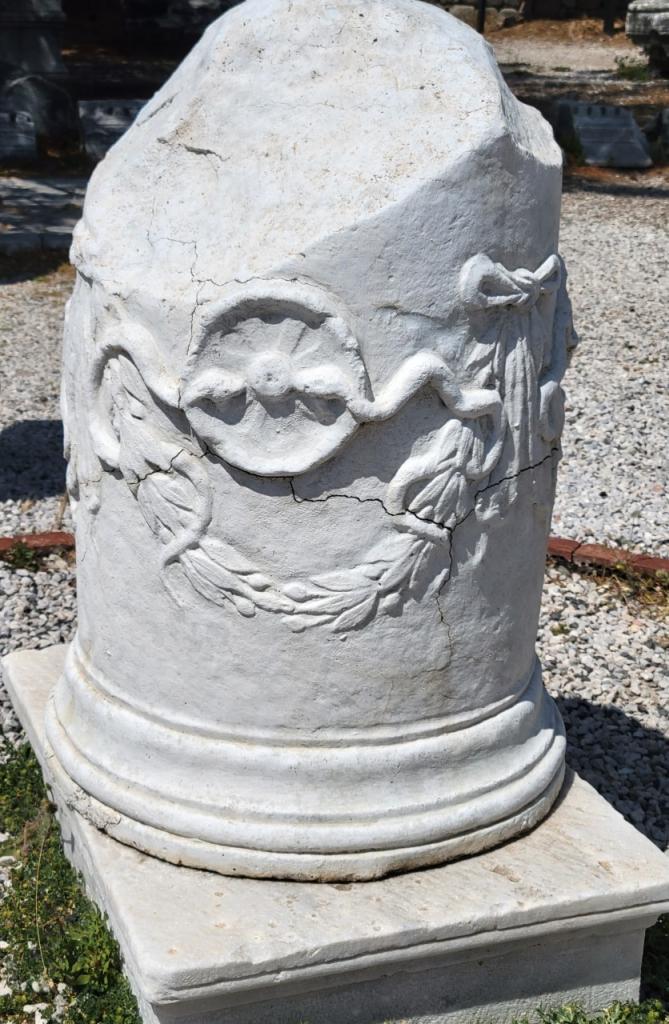The Asklepion is near to, but outside the lower city of Pergamon. It was reached from the acropolis by a via sacra, or sacred way. These special roads were not uncommon when one had a major temple complex which was not right in the city. Another good example would be the sacred way in Ephesus that led from the city to the Temple of Artemis. In Latin this covered walkway which began from the theater at the base of the theater at the acropolis and wound its way down to the Asklepion for a couple of miles was called the Via Tecta—
Today, the way to get there is by going through the front edge of the lower city and turning left at this statue—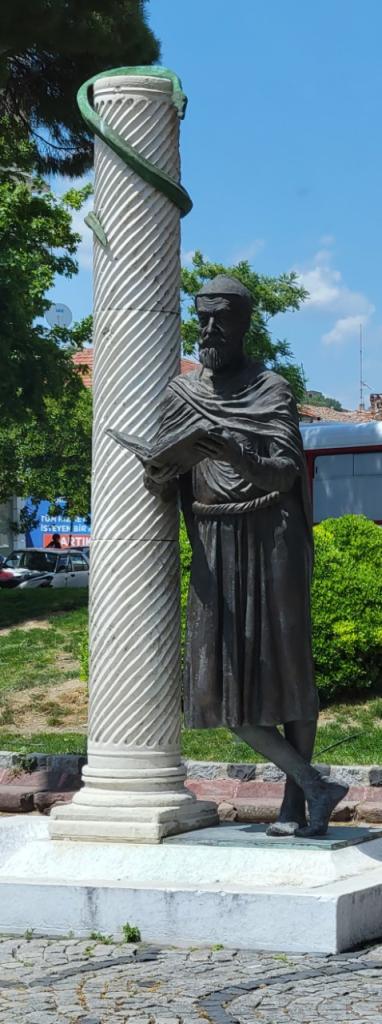
This is Galen (129 to 216 A.D.), the most famous physician of his age, so famous he was even summoned from Pergamon to Rome to treat the Emperor. Galen was the son of a wealthy resident of Pergamon and at 16 he decided to become a physician and trained in Pergamon, Smyrna, and at the most famous medical center in the Empire in Alexandria. His practices were so successful that his writings about medicine continued to influence subsequent doctors well into the middle ages. At first after completing his training in Egypt he returned to Pergamon and served as the physician for the gladiators who were bankrolled by the high priest of the Asian province. His treatises which he published became so famous that he suffered from counterfeiters writing books in his name. So bad did this theft of identity become that he had to write book entitled These Are the Books I Didn’t Write (and those I did), or words to that effect. At first, out of ambition he had moved to Rome to enhance his practice and prospects. This worked well but he recognized the signs of an oncoming plague in 166 A.D. and moved back to Pergamon, only to be summoned by the emperors Marcus Aurelius and Lucius Verus to accompany them on a military mission in northern Italy where he patched up soldiers and treated the sick. So successful was this practice that he was summoned back to Rome thereafter and also served subsequent emperors— Commodus and Septimus Severus. He lived a very long life by ancient standards dying at age 87. After Hippocrates, he was the most famous of all ancient physicians and it was both his practice and the temple of Asklepion which attracted many to the city of Pergamon.
When someone arrived at the medical complex, whether from the city or from out of town, they would be met at the entrance path by physicians who would examine those who had come. They would not admit either pregnant women or persons that were clearly about to die. There was a sign ‘Death is not permitted to enter here’. Along the sacred way from the acropolis there had already been various vendors selling healing balms, and supposed cures. Yes there were plenty of medical scams back then. It was Hadrian who not only completed the temple on top of the acropolis but also covered the sacred way to shield the infirm from the sun and bad weather.
Here is the end of the sacred way….
Down the middle of the road you can see the sewer system was underneath with drainage from above. See the white stones..
Lest you think this complex was just about a visit to the doctor’s office, there were places to stay, food to eat, and even entertainment for the guests who needed to stay long. Here is a whole theater complex as part of the medical complex—
The theater could hold 3,500 people at once, which should tell you how busy this medical complex could be. There was also sports here as a form of entertainment.
The form of treatments involved here included some common sense practices— isolation of the sickly, drinking clean spring water and eating simple food, if possible some exercise to get in better shape, and of course rest, but it also involved some religious practices as well.
Here’s an isolation chamber for the sick….
There are interesting tunnels as part of the complex which the ill would pass through, as part of a religious ritual hoping to hear from the god Asklepius as to what to do, or receive some reassurance that they were getting well.
We know that many thought their health was improved by coming to this combination doctor’s office, spa, and entertainment complex, because in the similar one in Corinth there are plaster cast molds of body parts that the patients made in thanks for what they took to be healing. So some surgery could be involved as well…. Here’s a shot of those molds from Corinth. See also my post on this blog on August 18th 2018.
It is notable how many molds there were of genitalia, hoping for cures from sexually transmitted diseases.
This complex would have immediately impressed those who came here with its long lines of tall columns…
Marble statues and pediments…
This one says Asklepion if you can look at it upside down! And of course there was the symbol of the god Asklepius— the staff with the snake wound around it, which is still a medical symbol today… As well as symbols of victory or cures…


